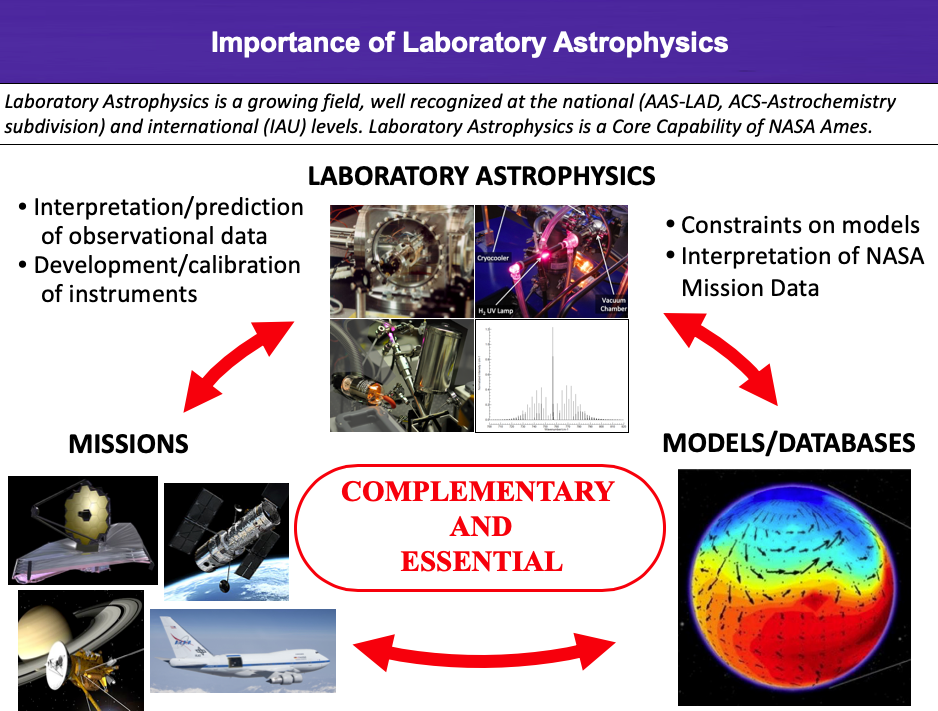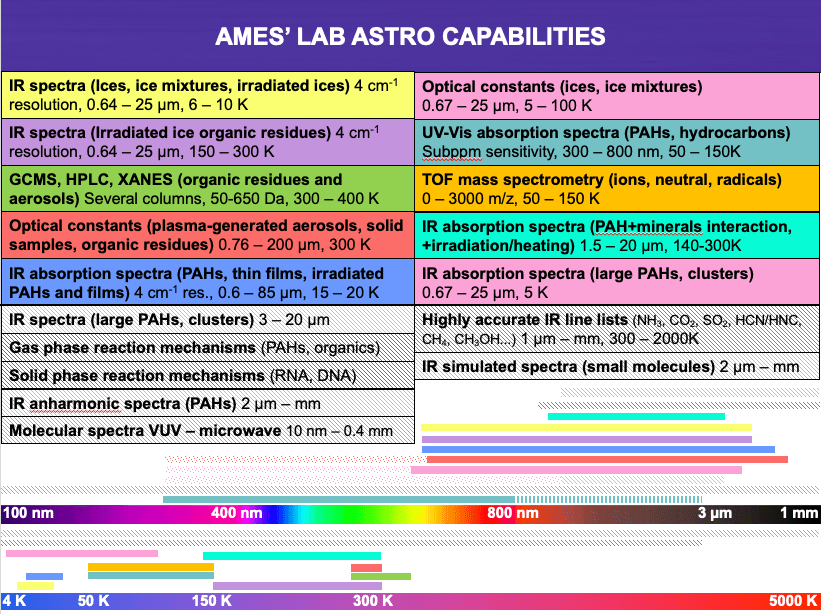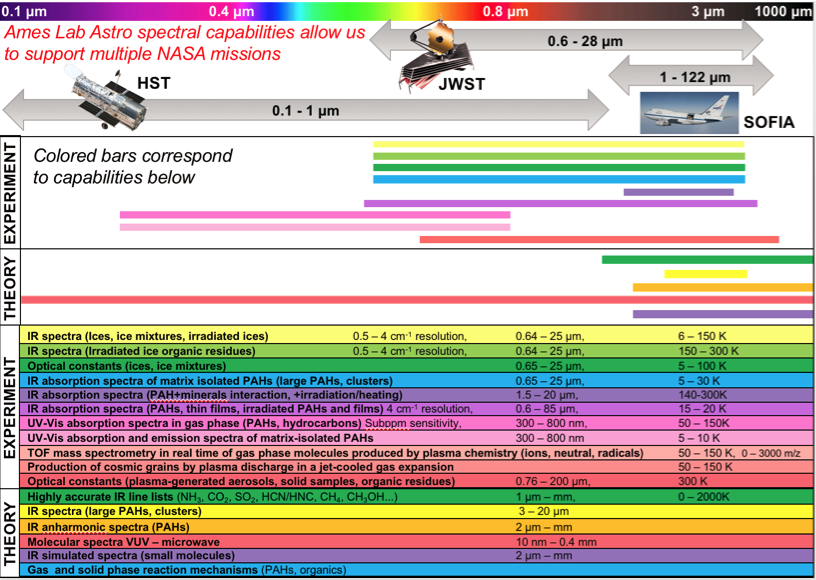NASA Ames Laboratory Astrophysics Capability
“Laboratory Astrophysics” consists of laboratory experiments and theoretical calculations dedicated to the understanding of our universe by complementing astronomical observations and astrophysical/astrochemical modeling. Laboratory Astrophysics plays a key role in the optimization of NASA missions, both at the science and instrument conception level and at the science return level. The multidisciplinarity of the workforce at NASA (astrophysicists, astrochemists, chemists, physicists, planetary scientists, theoreticians, astronomers) makes it a unique environment for doing Laboratory Astrophysics research.
Current NASA Ames Laboratory Astrophysics Facilities:
Ices, Ice Irradiation, and Organics Laboratory for AstroBiology (I3OLAB)
COSmIC Facility
Institute for Carbon Evolution Experiments (ICEE)
Matrix Isolation/ Optical Constants of Ices Laboratory
Modeling Laboratory
Optical Constant Facility for Solid Samples
Quantum Chemistry Laboratory
The NASA Ames PAH IR Spectroscopic Database (PAHdb)
Additional information can be found at astrochem.org
The Laboratory Astrophysics group at Ames uses its expertise and exploit its well-established and recognized experimental and theoretical facilities to study:
- The Molecular Universe (PAH and carbon molecule research)
- PAHs and carbonaceous molecules — characterization from UV to IR, formation mechanisms (theory + experiment)
- Astrophysical ices — characterization in IR and Raman + optical constants
- Photochemistry of irradiated ices — characterization in IR, Raman (lab + theory)
- Ice-grain interaction — characterization in IR, Raman (lab + theory)
- Cosmic grain analogs — formation mechanisms (theory+experiment) and characterization, UV-FIR, SEM, mass spectrometry
- Small molecules — highly accurate line lists and spectroscopic constants, opacity data, and detailed characterization of critical molecules
- Astrobiology
- Ice photolysis and irradiated ice residues, prebiotic molecule formation processes — IR, XANES, GC-MS (lab + theory)
- Evolution of organic matter in space environments — experiment (IR, XANES, GC-MS) + theory
- Solar system objects (Titan, Pluto, comets, asteroids)
- Comets/meteorites/asteroids/presolar materials — return sample analyses + laboratory and theoretical studies
- Planetary atmospheric and surface chemistry (Io, Moon, Pluto, Venus, Titan, Mars) — observations, modeling, laboratory (IR, Raman, XANES, GC-MS, TOF-MS, SEM), theory (IR line lists for remote sensing and simulation)
- Exoplanets
- Exoplanetary atmospheres — spectral line lists, opacities, experimental and theoretical simulation, optical constants
- Databases
- PAHdb, Ramdb, AMSD, line lists, optical constants database




























